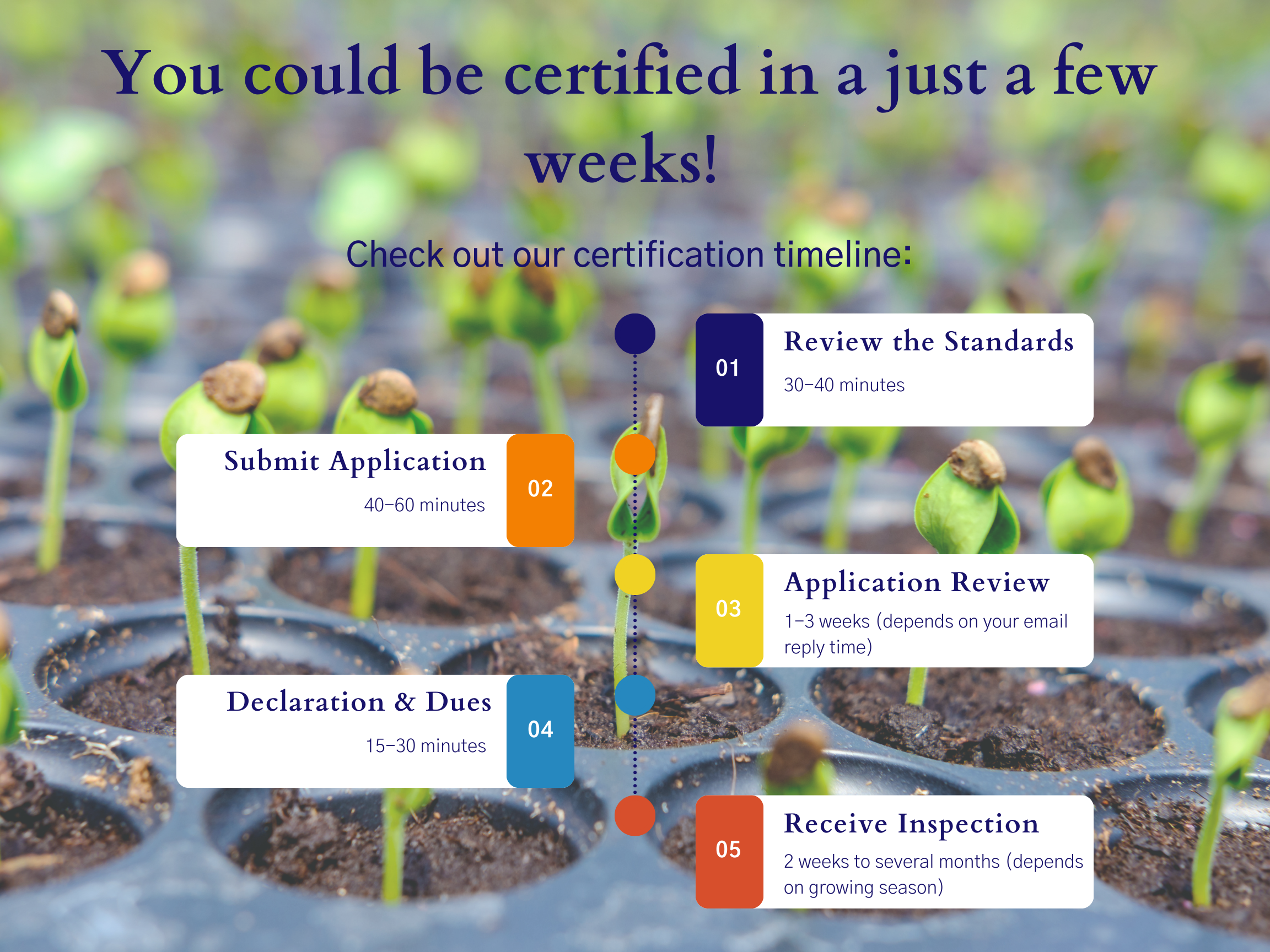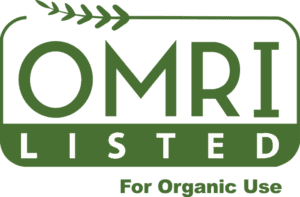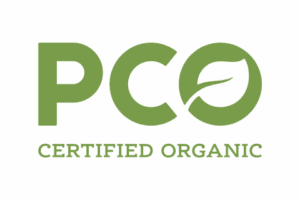Inspecting other farms is arguably the most unique part of being a CNG farmer. The opportunity to walk around a fellow grower’s farm, talk shop, and share tips is what many CNG members appreciate most about their certification. We know that peer review inspections provide amazing connection opportunities and are a robust method for verifying standards, but how can we ensure that we’re providing the best inspection possible? We’ll give you a hint: it’s all about HATS!
Peer Review Class
Back in the early, strange days of the pandemic, CNG had to get creative with the inspection process and started up a system for remote observed inspections (ROIs) on Zoom. The observers loved the opportunity to watch a real inspection and found the experience fun and educational. We quickly realized that if we were going to offer these ROIs to our membership as educational opportunities, we should provide some extra support to the brave farmers taking on these remote inspections. Out of this need came the Senior Inspector (SI) program and the Peer Review Class. Initially only offered to folks hoping to become SIs (the only CNG farmers certified to conduct remote inspections), we soon expanded the Peer Review Class to the entire CNG membership. Close to 100 CNG farmers (and even some extension agents) have taken the class so far!
The Peer Review Class is a two hour, experiential class, helping farmers practice the inspection skills necessary to conduct an educational and robust CNG inspection through roleplaying and practical scenarios. Though standards invariably come up throughout the class, the curriculum is centered around, not standards clarification, but the five roles that every great inspector plays thoughout an inspection, lovingly referred to as the hats.
Curious? Consider signing up to take the Peer Review Class, offered only twice per year, in April and October. Visit the Events page to sign up and we’ll see you in class!
The Five Hats
Guide
The role of the Guide is to keep the inspection on track, both topically and temporally. The inspector should agree on an agenda with the farmer beforehand and appropriately manage time throughout the inspection. Guides drive the conversation and agenda, redirecting when necessary. The Guide’s role is to manage the time and keep the conversation focused to ensure all needed verification occurs within a reasonable time frame. We’re trying to avoid the inspection scenarios where two farmers sit around chatting about whatever and then fly through the inspection paperwork in 10 minutes at the end. (We know none of YOU have ever done that). As we like to say in class, Guides are officially empowered to steer the ship!
Educator
The Educator’s job is to clarify for the farmer receiving the inspection (and any observers) the specific standards that are relevant throughout the inspection, when it might not otherwise be clear. Taking time to pause and explain CNG standards (or, better yet, empower the farmer to do so), can help solidify understanding of the standards and how they relate to the operation. If observers are present, the Educator can invite their questions and feedback too. Educators make the inspection a learning experience for everyone: the farmer and the observers, ensuring that everyone walks away with a better understanding of CNG standards.
Detective
Wearing the Detective hat is usually the most obvious of the five inspection roles (these are inspections after all). It’s the Detective’s job to ask probing, open-ended questions and appropriate followup questions. It’s crucial to focus on common misunderstandings and take extra time to verify that standards are being met. Once the Detective has gathered the information, they can determine if a corrective action is necessary (or provide CNG with the information to do so). Sometimes the farmer’s first answer doesn’t provide enough information to determine if they’re meeting CNG standards. Detectives are always ready to dig deeper. (Think Inspector Gadget with a sunhat and Carhartts).
Mentor
As a Mentor, inspectors take it from where the Detective left off. The Detective determines that a corrective action is necessary, then, donning the Mentor hat, the inspector respectfully explains the need for an adjustment in practices. Once the farmer understands the issue, the Mentor and the farmer work together to make a plan to address the noncompliance. Inspections should be a learning experience and a noncompliance is often a great opportunity for growth. The best Mentors understand and foster the spirit of collaboration by working with the farmer to make a plan. Note that the Mentor’s job is not to determine the consequences for a noncompliance; CNG staff will follow up with the farmer post-inspection.
Reporter
The Reporter hat was a late addition to the Peer Review Class curriculum and came as a response to students’ concerns about consequences and enforcement. An inspector’s main goal is to gather information and provide an illustrative picture of both the farmer’s operation and decision making. Reporters record their observations carefully so that CNG can move forward with additional next steps or interventions if necessary. CNG staff review each inspection report before finalizing a farm’s certification for the year and these reports provide us with invaluable information. What standards have not been met? How have a farm’s buffer zones or planting stock sources changed? Are there new pest or disease management practices in place in response to a more volatile climate? Reporters are our eyes on the ground, but they are not enforcers. Report what you see then hand it off to CNG staff to take the next steps! Stellar Reporters always promptly send in the inspection paperwork so they don’t hold up the farmer’s certification.
Inspection Season
With all this Hat talk you’re probably thinking about your next inspection. That’s great! Inspections must be done during the growing season, and annually. To make life easier for you and your peer-reviewer, aim to get it scheduled early in your season if possible, so you’re not scrambling during peak harvest time. Even if your inspection is not due til later in the year, get it done when it fits best into your schedule. Then you’ll be ahead of the game this year and for years to come!
And, to support your lofty early inspection goals, we’ve got newly revamped Produce Inspection Reports, helpful inspection tips, and a fun film featuring CNG farmers, What to Expect When You’re Inspecting.
All members are expected to sign up for a Peer Review Class. The two classes offered in 2024 will be on April 10 and October 21. You’ll get a chance to practice all the Hats alongside fellow CNG farmers from all over North America—it’s super fun AND informative!
We want to give a big shout out to Janet Aardema of Broadfork Farm for helping us develop the curriculum for the Peer Review Class. We’d also like to thank Clay Brady of Foster Brady Farm for jumping in as a class instructor and providing invaluable course feedback. Much gratitude as well to all of the Senior Inspectors out there who were the gracious guinea pigs in the early days of this class. Y’all are the best!








 Understanding the restrictions on certain products is key to remaining in compliance with CNG standards and using inputs responsibly and cost-effectively. Please reach out to CNG if you need help determining if an input is allowed for use.
Understanding the restrictions on certain products is key to remaining in compliance with CNG standards and using inputs responsibly and cost-effectively. Please reach out to CNG if you need help determining if an input is allowed for use.